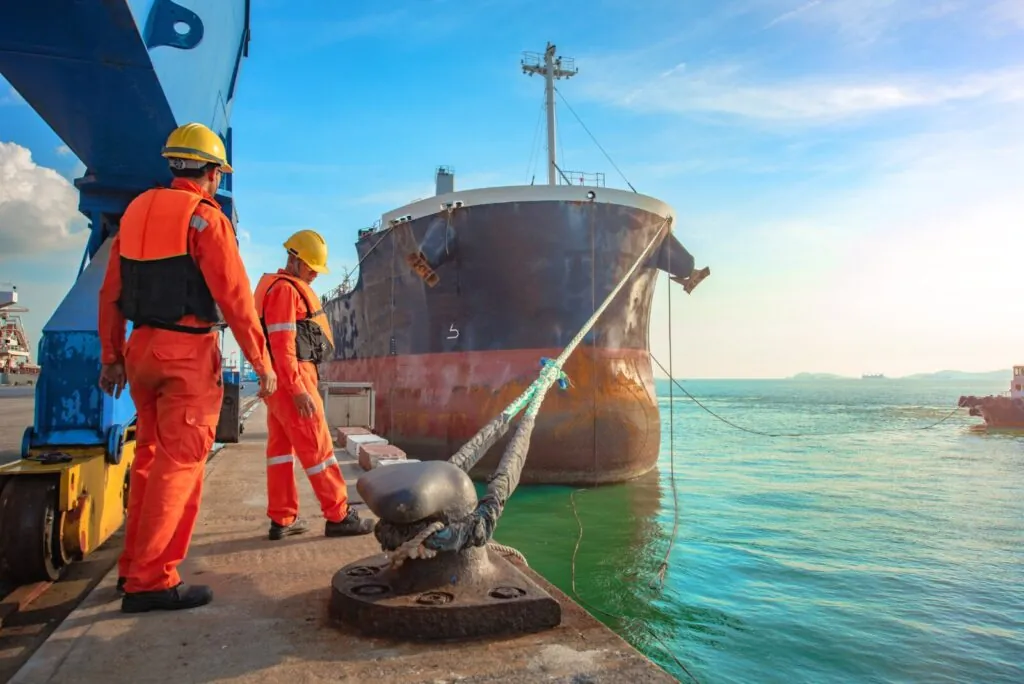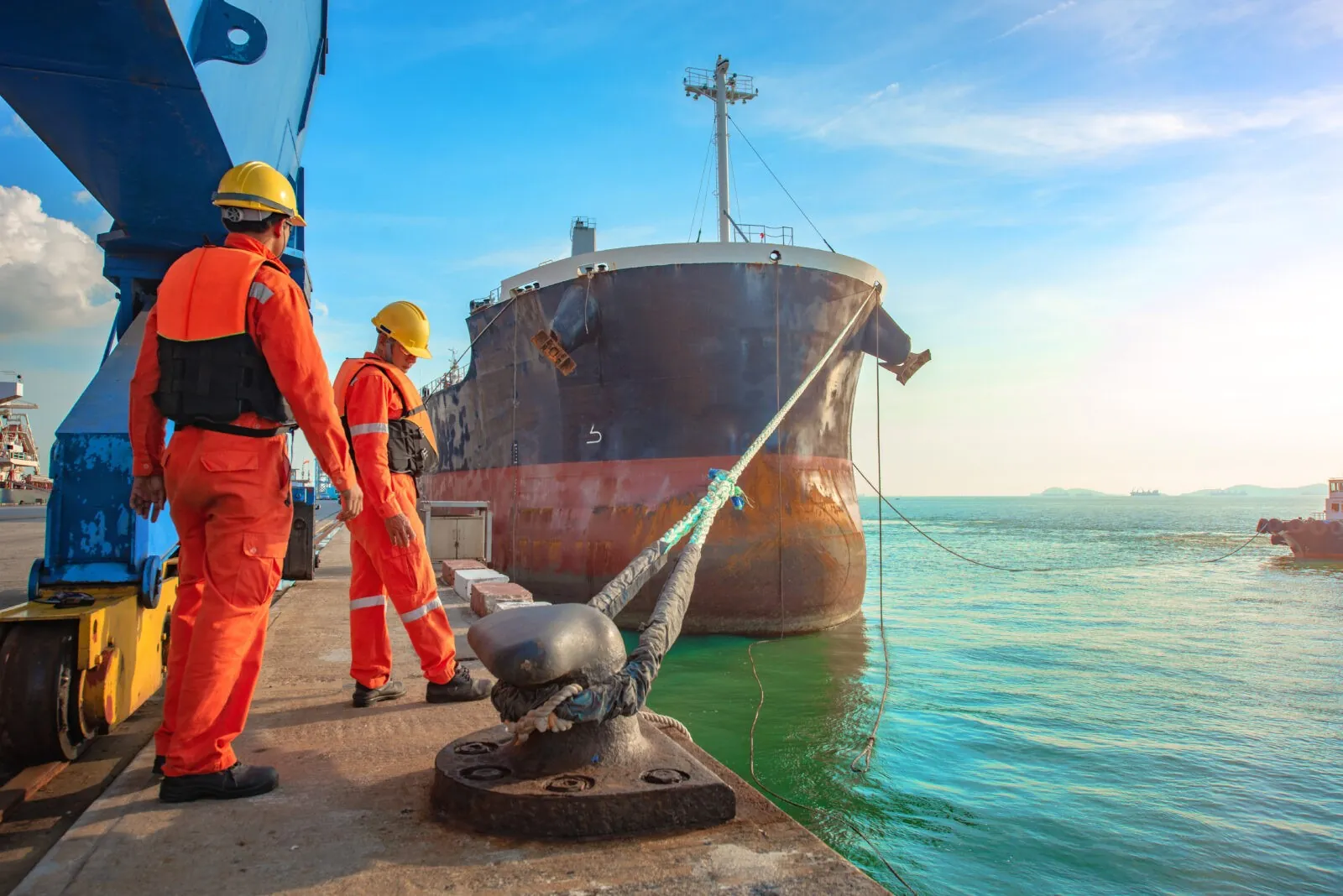How to Determine the Settlement Value for a Maritime Injury Case
Maritime work is essential to global trade, energy production, and countless other industries, but it comes with unique dangers. The risk of injury is higher in maritime environments compared to many land-based jobs, making it crucial for injured workers to understand their rights and options. Maritime injury settlements are designed to provide financial support for medical expenses, lost wages, and other damages so workers can recover without unnecessary financial hardship.

This guide will explore everything you need to know about maritime injury settlements, including key laws like the Jones Act, factors that influence settlement amounts, common causes of workplace injuries, and steps to file a strong claim. If you’re an injured maritime worker or someone supporting a loved one, this comprehensive guide will help you navigate the complexities of maritime law and seek the compensation you deserve.
What Are Maritime Injury Settlements?
A maritime injury settlement is a financial agreement between an injured maritime worker and their employer (or the employer’s insurer) to compensate the worker for the physical, emotional, and financial damages caused by a workplace accident. These settlements are distinct from traditional workers’ compensation, which often applies to land-based employees. Maritime workers have unique protections under admiralty law, including the Jones Act and provisions for Maintenance and Cure payments.
Settlements are intended to help workers recover financially from injuries that may leave them unable to work temporarily or permanently. The ultimate goal of a maritime injury settlement is to ensure that injured workers can rebuild their lives, even if their injuries result in lasting challenges.
Understanding Maritime Law Compensation
Maritime injury law is a highly specialized area designed to address the unique risks that seamen, offshore workers, and other maritime employees face. These laws ensure that injured workers have the right to pursue compensation, even in complex legal environments like international waters or offshore rigs.
What Is the Jones Act and How Does It Affect Settlements?
The Jones Act, a part of the Merchant Marine Act of 1920, is one of the most important laws for maritime workers. It gives injured seamen the right to file lawsuits against their employers if negligence played a role in their injury. Unlike traditional workers’ compensation laws, the Jones Act allows workers to recover not just medical expenses and lost wages but also damages for pain and suffering and other intangible losses.
For example, if a deckhand slips and falls on an improperly maintained deck, they can file a claim under the Jones Act to recover compensation for hospital bills, time off work, and even the emotional toll of the injury.
Key benefits of the Jones Act include:
- Broader compensation: Covers more than just medical costs, including lost future earnings and pain and suffering.
- Negligence accountability: Holds employers responsible for unsafe working conditions, such as inadequate safety equipment or poor training.
- Legal recourse: Provides injured workers with the ability to sue in federal or state courts.
Maintenance and Cure Payments: A Safety Net for Injured Seamen
Even if negligence cannot be proven, injured seamen are entitled to Maintenance and Cure payments under maritime law. These benefits are provided regardless of fault and are designed to support workers during their recovery.
Maintenance covers basic living expenses, such as rent, food, and utilities, while the worker is unable to work due to their injury.
Cure covers reasonable medical expenses related to the injury, such as surgeries, physical therapy, and prescription medication, until the worker reaches Maximum Medical Improvement (MMI).
While Maintenance and Cure payments are fundamental rights for injured maritime workers, disputes over their adequacy or duration are common. Employers may try to cut off payments early or dispute the worker’s eligibility, underscoring the importance of seeking legal assistance.
Calculating Maritime Injury Case Value
Determining the value of a maritime injury case is a nuanced process that takes into account various factors. Each case is unique, and settlement amounts can vary widely based on the severity of the injury, the worker’s role, and the circumstances of the accident.
Key Factors Influencing Settlement Payouts
1. Medical Expenses
This includes both immediate costs, such as emergency room visits and surgeries, and future expenses, like ongoing rehabilitation or long-term care.
Workers should also consider hidden costs like transportation to medical appointments and specialized equipment.
2. Lost Wages
Maritime injury settlements typically include compensation for income lost during recovery.
If the injury results in long-term or permanent disability, the settlement may include compensation for diminished earning capacity.
3. Pain and Suffering
Emotional and physical distress often accompanies serious injuries. Maritime law allows workers to seek damages for this suffering, which may include chronic pain, mental health challenges, and reduced quality of life.
4. Negligence and Employer Responsibility
If the employer’s negligence played a significant role in the accident, the settlement value is often higher. For example, failing to repair faulty equipment or ignoring safety protocols can lead to larger payouts.
Pain and Suffering: A Critical Component of Settlements
Pain and suffering are non-economic damages, but they play a significant role in many maritime injury settlements. The court or insurance company will consider factors such as:
- The severity of the injury and the pain experienced during recovery.
- The emotional impact of the injury, including anxiety, depression, or PTSD.
- How the injury has changed the worker’s ability to enjoy life or participate in hobbies and family activities.
Common Causes of Maritime Workplace Accidents
Maritime accidents occur for a variety of reasons, but they are often the result of unsafe working conditions or employer negligence. Understanding the common causes of these accidents can help injured workers build stronger cases.
Negligence in Maritime Injury Cases
Negligence plays a major role in many maritime injuries. Employers are required to provide a safe working environment for their employees, but failures in this duty are common. Examples of negligence include:
- Failing to provide proper safety training or equipment.
- Poor maintenance of vessels or machinery.
- Overworking employees, leading to fatigue-related accidents.
Safety Violations and Legal Implications
When employers violate safety standards, the consequences can be devastating. Common violations include failing to meet OSHA standards, improper handling of hazardous materials, or ignoring required safety inspections. These violations can strengthen a worker’s case, especially if they contributed directly to the injury.
Steps to File a Maritime Injury Claim
If you’ve been injured on the job, following the proper steps can make a significant difference in the outcome of your claim.
1. Report the Injury Immediately
Notify your employer of the accident as soon as possible. Prompt reporting ensures the incident is documented and helps establish a clear timeline for your case.
2. Seek Medical Attention
Even if the injury seems minor, consult a medical professional. Medical records are critical evidence for proving the severity of your injury and its impact on your ability to work.
3. Gather Evidence
Document everything related to the accident, including:
- Photos of the accident scene and your injuries.
- Witness statements from coworkers.
- Maintenance records or safety inspection logs that indicate employer negligence.
4. Consult a Maritime Injury Lawyer
Navigating maritime law can be overwhelming, but an experienced lawyer can:
- Help calculate the full value of your settlement.
- Negotiate with insurance companies.
- Represent you in court if the case goes to trial.
Frequently Asked Questions About Maritime Injury Settlements
What is the average settlement for maritime injury cases?
The average settlement for maritime injury cases can vary widely based on factors such as the severity of the injury, the degree of employer negligence, and the long-term impact on the worker’s ability to perform their job. While minor injuries may result in settlements ranging from $50,000 to $150,000, more serious injuries involving long-term disability or permanent impairment can result in settlements worth several hundred thousand dollars or even millions. Consulting a maritime injury lawyer is essential to understanding the potential value of your specific case.
How does the Jones Act protect injured maritime workers?
The Jones Act provides injured maritime workers with the legal right to sue their employers for negligence. Unlike traditional workers’ compensation laws, the Jones Act allows for broader recovery, including compensation for pain and suffering, lost future earnings, and other damages. To file a claim under the Jones Act, a worker must prove that their employer’s negligence contributed, even minimally, to their injury. This law ensures that maritime workers are protected and compensated for unsafe working conditions.
What is the role of Maintenance and Cure payments in maritime injury cases?
Maintenance and Cure payments are benefits owed to injured maritime workers regardless of fault. Maintenance provides financial support for basic living expenses, such as rent, food, and utilities, while Cure covers medical expenses related to the injury until the worker reaches maximum medical improvement (MMI). These payments ensure that injured workers can recover without being overwhelmed by daily living costs and medical bills. Disputes over these payments are not uncommon, so legal assistance is often helpful in securing fair and adequate benefits.
Can I include pain and suffering in my maritime injury claim?
Yes, pain and suffering can be included in maritime injury claims. This compensation is meant to address the physical pain and emotional distress caused by the injury, as well as the impact on the worker’s quality of life. For example, if the injury leads to chronic pain, anxiety, or the inability to participate in previously enjoyed activities, these factors can be considered in calculating pain and suffering damages. A skilled maritime injury lawyer can help quantify this type of compensation and advocate for its inclusion in your settlement.
What should I do immediately after a maritime injury?
The first step after a maritime injury is to report the incident to your employer as soon as possible. Prompt reporting ensures that the accident is documented, which is critical for building a strong case. Seek medical attention immediately, even if the injury seems minor, as medical records will play a significant role in proving your claim. Collect any evidence available, such as photographs of the accident scene, witness statements, and maintenance records. Finally, contact a maritime injury lawyer to understand your legal options and start the claims process.
Contact The Cruise Injury Law Firm Today
Maritime injury settlements are complex, and injured workers often face pushback from employers and insurance companies. To protect your rights and ensure you receive fair compensation, it’s crucial to consult an experienced maritime injury lawyer as soon as possible.
A skilled lawyer can help you navigate the legal process, gather evidence, and calculate the true value of your claim. Don’t let the complexities of maritime law stand in the way of your recovery—schedule a free consultation today to get the compensation you deserve.






